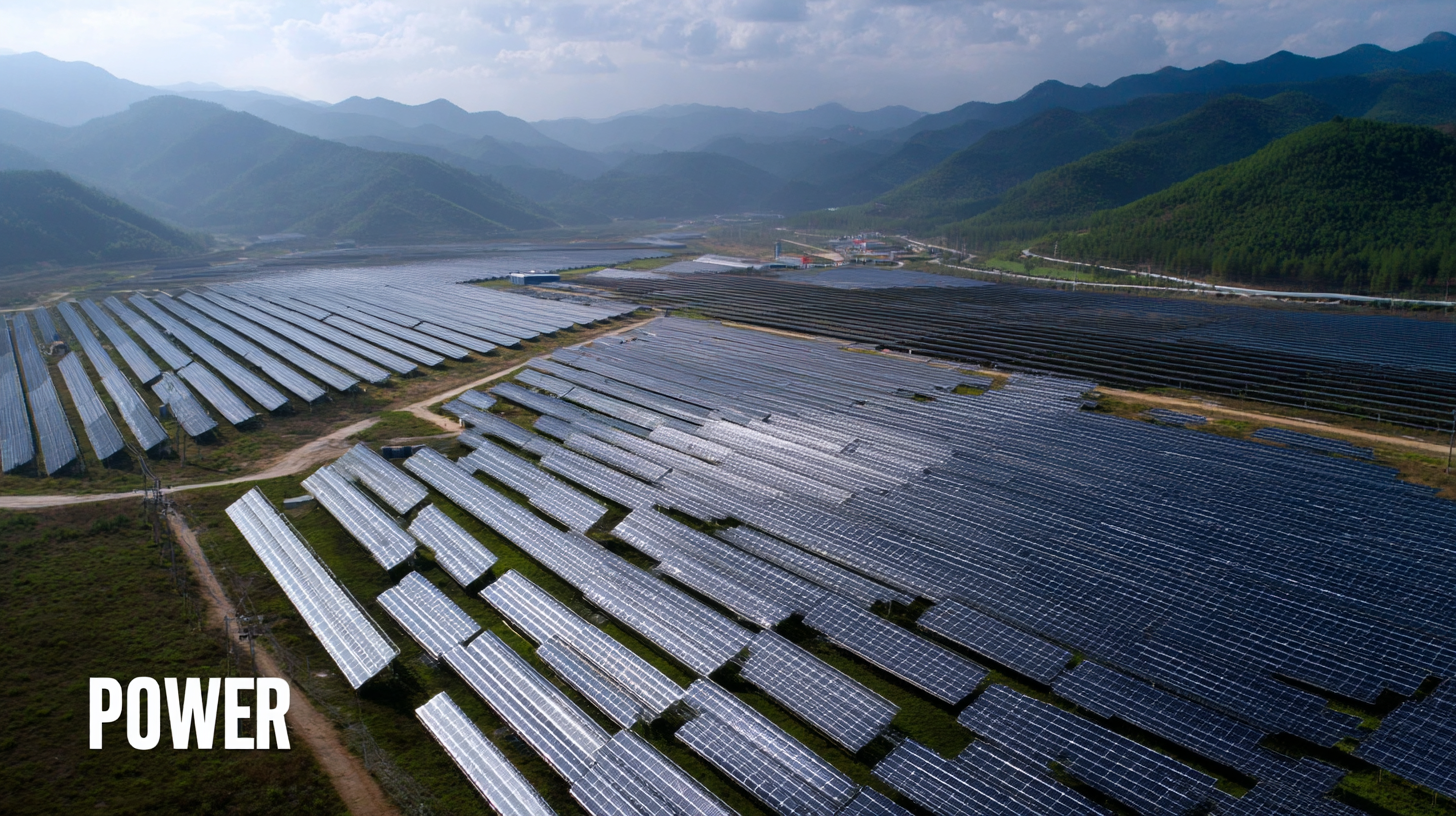Global Reach: Elevating Solar Energy Standards with China's Best Solar Power Solutions
As the world pivots towards sustainable energy solutions, Solar Power has emerged as a leading contender in the quest for cleaner energy. According to the International Energy Agency (IEA), global solar energy capacity grew by a staggering 22% in 2020 alone, reaching over 800 gigawatts (GW) and becoming the fastest-growing renewable energy source. China, a pivotal player in this solar revolution, accounted for nearly 35% of total global capacity, positioning itself as the largest producer of solar panels worldwide. In light of this rapid growth, the need for elevated solar energy standards has never been more critical. This blog explores how China's best solar power solutions can set new benchmarks in the industry, ensuring not only efficiency and sustainability but also a more accessible transition to solar energy for countries around the globe.

The Importance of International Standards in Solar Energy
In the rapidly evolving solar energy industry, the importance of international standards cannot be overstated. As countries around the globe strive to harness solar energy effectively, having a framework of standardized protocols ensures that products are reliable, efficient, and safe. According to the International Renewable Energy Agency (IRENA), investments in solar power could reach up to $2.2 trillion by 2030, underscoring the need for standardized practices to maximize efficiency and return on investment.
One crucial aspect of international standards in solar energy lies in the performance and safety testing of solar panels. For example, the IEC 61215 standard provides guidelines for the design and evaluation of crystalline silicon solar modules, ensuring they can withstand environmental stresses over time. It is vital for manufacturers, especially those in leading solar markets like China, to adhere to such standards to maintain quality and consumer trust.
Tips for manufacturers and consumers alike include staying updated on the latest international standards and certifications, such as those from the International Electrotechnical Commission (IEC) and Underwriters Laboratories (UL). Additionally, engaging with forums that discuss industry standards can foster collaboration and knowledge sharing. By prioritizing standardized quality, the solar energy sector can innovate while ensuring that global energy demands are met sustainably and efficiently.

China's Innovative Solar Technologies Transforming Global Markets
China's innovative solar technologies are reshaping global markets, positioning the nation as a leader in renewable energy. According to the IEA's 2024 renewable energy report, China has rapidly evolved into a dominant force in solar energy, significantly influencing the global landscape. With ongoing advancements in solar panel efficiency and production capabilities, China is not just meeting domestic demand but is also exporting technology and expertise worldwide. This shift is empowering countries looking to transition to cleaner energy sources, thereby driving a global movement toward sustainability.
The recent unveiling of groundbreaking innovations in photothermal technology further solidifies China's grip on the solar market. These advancements, coupled with ambitious policies like "Made in China 2025," have catalyzed the development of advanced industries, enabling China to set the competitive standards for solar energy. With projections indicating a need for 10,000 GW of wind and solar power by 2060, it is evident that China's commitment to innovation will play a crucial role in meeting international energy demands and addressing climate change challenges.
Global Solar Power Solutions: Capacity Growth (2018-2023)
This chart illustrates the growth in solar power capacity worldwide from 2018 to 2023, demonstrating the impact of innovative technologies in solar energy.
How China's Solar Solutions Enhance Sustainability Worldwide
China has rapidly emerged as a global powerhouse in solar energy solutions, offering innovative technologies that enhance sustainability worldwide. With a commitment to reducing carbon emissions and advancing renewable energy, Chinese manufacturers have developed a diverse range of solar products, from photovoltaic panels to energy storage systems. These innovations not only lower energy costs but also provide reliable power to communities in both developed and developing regions, promoting a significant shift toward a greener future.
The impact of China's solar solutions extends beyond its borders, as countries around the world adopt these technologies to meet their sustainability goals. By facilitating energy independence and reducing reliance on fossil fuels, China's initiatives in solar energy contribute to a global movement towards a more sustainable economy. Furthermore, these solutions are essential in rural electrification efforts, providing clean and accessible energy to underserved populations, thereby enhancing their quality of life. As the world continues to grapple with climate change, China's leadership in solar energy underscores the importance of cooperation and innovation in achieving a sustainable future for all.

Key Players in China's Solar Energy Industry Making a Difference
As China continues to pave the way in the solar energy industry, several key players are making significant contributions to elevate global solar energy standards. The nation's solar power solutions are not only aimed at domestic consumption but also seek to meet the growing demands of international markets. According to recent reports, China's involvement in the U.S. solar tariff case reflects its complex standing as both an innovator and a competitor in the global solar sector.
Tips: Always stay updated on international trade regulations affecting the solar industry, as they can impact market dynamics significantly.
Furthermore, reports indicate that the cost of solar technology is projected to decrease considerably by 2025, making it more competitive compared to traditional energy sources like coal and natural gas. This reduction in costs is primarily driven by advancements in photovoltaic technology and increased manufacturing efficiency.
Tips: Consider investing in solar technology now, as prices are expected to drop further, offering potential savings and a greener energy future.
The collaboration between Chinese companies and global partners is crucial for the acceleration of solar adoption worldwide. With a concerted effort towards lowering carbon footprints, the industry is reshaping energy landscapes and driving sustainable growth.
Tips: Engage with local solar energy initiatives to support and promote clean energy solutions in your community.
The Future of Solar Energy: China's Role in Global Expansion
China's role in the global expansion of solar energy is undeniable, as it has become both the largest manufacturer and consumer of solar photovoltaic (PV) technology. According to the International Energy Agency (IEA), China's solar power capacity reached over 250 GW in 2020, accounting for nearly 30% of the world's total. This significant contribution not only showcases China's commitment to renewable energy but also emphasizes its potential to influence global standards and practices within the solar industry.
As countries strive to meet their renewable energy targets, China continues to innovate and improve solar technologies. For instance, the development of bifacial solar panels and advanced energy storage solutions has helped increase efficiency and output significantly. Joining hands with international partners will further enhance the global reach of these solutions, making solar energy more accessible and affordable for nations aiming for sustainability.
Tip: When considering solar energy solutions, evaluate the long-term benefits of advanced technologies, such as energy storage systems that optimize the use of solar power throughout the day.
Additionally, engaging in collaborations with Chinese manufacturers can provide access to cost-effective, high-quality solar products. This could greatly enhance the feasibility of large-scale solar projects worldwide, promoting a greener future.
Tip: Research funding options and incentives in your region, as many governments offer grants or subsidies to support solar energy investments.


